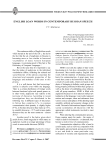Статьи журнала - Вестник Волгоградского государственного университета. Серия 2: Языкознание
Все статьи: 1505
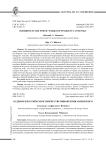
Buddhism in the poetic works of innokenty annensky
Статья научная
The importance of the work is determined by the place which I. Annensky occupies in Russian poetry and his unrelenting influence on generations of readers. The purpose of the work is to reveal the presence and linguistic ways of implementing the semantics of the Buddhist understanding of the world in the poetic heritage of I. Annensky. The material for the study is all original poems of the poet. The main methods are semantic, comparative and intertextual analysis. From the days of his study at the university, the poet was well acquainted with the basics of Buddhism and demonstrated obsession with it throughout his life. Several poems undoubtedly present semantic complexes that are directly referred to Buddhism, refurbishing its major provisions. The ways of translating Buddhist semantics are diverse and they are always organically interwoven into an artistic whole. The language of the poet is consistently focused on ambiguity, uncertainty and ambivalence, which is manifested at various text levels. The work lists the main language transformations used by the poet. It is illustrated on the example of the poem “”, which mysteriousness steadily draws the attention of readers and researchers. The author shows that the poem realizes the Buddhist conception of the ratio of extremely small and infinitely large quantities, implying their identity. The authors draw a parallel between the lines of I. Annenskyand W. Blake which implement identical Buddhist ideas. The conclusion outlines the prospects for a detailed analysis of other texts.
Бесплатно
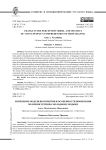
Change in the perception model and specifics of young people's comprehension of term meaning
Статья научная
The article discusses some changes that have been taking place in particular structures of mental lexicon. It presents the results of linguistic experiment aimed at revealing some shifts in perception of terms resulting from global virtualization of reality, which greatly affects all the structures of language consciousness, and transformation of information perception processes due to computerization. A new test was developed and used to get true information about dominant perceptional modality of the experiment participants. The results of the first stage of the experiment show that during the period of eleven years (2010-2021) the perception model of people aged from 18 to 20 has been shifting towards a digital type, when comprehension of a word meaning is based on logic, real facts, proofs. Some possible reasons for digital modality prevalence, the use of visual modalityas an auxiliary tool for the digital representational system, decrease in the significance of kinesthetic and auditory modalities are described. The results of the second stage of the experiment reveal a rather high level of emotional attitude to the stimuli connected with the professional sphere of digital generation. In this case the psychological emotionality of term meaning implies great interest, involvement and good understanding of the notion.
Бесплатно
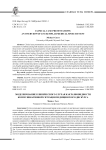
Clinical case presentations: an overview of an exemplar medical speech event
Статья научная
Clinical case presentations are core medical speech events carried out in medical and teaching institutions worldwide among both students and active practitioners. While in most non-English speaking locales these events will usually be communicated in a local language they are also, on set occasions, often performed in English. In order to understand both how and why clinical case presentations are carried out in English in non- English speaking Asian locales, the author visited 8 medical universities and/or affiliated hospitals in 6 Asian countries, observing a total of 36 English clinical case presentations, followed by interviews with 25 different clinical practitioners, teachers, or medical students. The author then analyzed the collected speech event data in terms of Hymes’ (1974) SPEAKING model, augmented by Swales’ (1990) focus upon ‘moves’ in genre analysis, and further informed by Bhatia’s (1994) introduction of a socio-cognitive dimension to genre analysis, in order to develop a well-rounded descriptive synoptic model of how this speech event is both perceived and performed in non-English speaking English settings. It is hoped that these insights can be further applied to the development of English for Medical Purposes (EMP) materials or curricula and that this case may serve as an exemplar for other inquiries into professional, situated ESP speech events.
Бесплатно
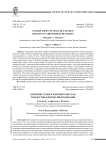
Closed topics in linguocultures: identity in the form of diversity
Статья научная
The present article deals with the meaningful and functional characteristics of the closed topics, that are the topics which are thought to be improper (taboo), and they are blocked in Russian, English and Chinese communication in a variety of ways. Their characteristics have not received a proper description in scientific works; therefore the study, based on the methods of semantic and communicative analysis, survey and comparison of the communication ways in different languages, aimed at filling the gap in probative identification of a list of closed topics, seems to be a current matter of interest. The authors use the term closedness and view it as an indicator of topic’s irrelevance that manifests itself with various language means. The article demonstrates the presence of a commonly shared list of closed topics in the above mentioned cultures. The possibility of reference to such topics in conversation is regulated by communication format, purpose and the degree of contact’s intimacy. The strategies of closed topic avoidance are marked with semantic replacement called mitigation and euphemism substitution. The study results ascertain that the closed topic list is shared by the Russian, English and Chinese cultures, but points to some differences in the way the conversations go. In conclusion the authors give a wide range of applications: from theoretical constructs that describe the mechanism of communication processes flow to the specific recommendations for optimizing communication in different spheres of human interaction.
Бесплатно
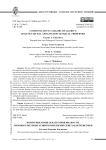
Communicative category of alterity: linguocultural and linguoecological properties
Статья научная
The aim of the article is to give an in-depth insight into alterity as a communication category in the cognitive and discursive aspects. Being an indispensable part of communication and cognition, the category has its own meaning presenting the communicative interaction within the frame “I - the Other”. The category of alterity has its own set of category properties, which are specified uniquely in different languages. Alterity as a linguistic category may express an outlook on the reality (similar, i.e. familiar, devoid of risk: other, different, vague, evidently evoking fear or curiosity). In the Russian language, it is linked to the emotional clusters of curiosity , fear , suspense , whereas in the English language it is associated with curiosity , admiration , surprise and novice . Alterity is characterized similarly in English and Russian through maintaining such features as dissimilarity , variety , multifariousness , belonging to different classes / groups , distinct opposition . As well as common features, alterity manifests culturally specific meanings in English ( being eccentric , revolutionary , new , fresh ) and Russian ( being funny and incongruous ). The article includes a description of the linguistic means and communicative strategies and tactics, with the help of which the category of alterity is realized in fiction. The category content is variable in the discourse and it serves ground for the ecological and non-ecological mode of communication.
Бесплатно
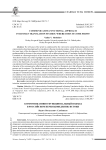
Communicative-functional approach in Russian translation studies: where does it come from?
Статья научная
The relevance of the article is conditioned by the vital need to comprehend prerequisites of the communicative-functional approach to translation in Russian translation studies, which, in its turn, will help reveal the inner logic of the development of translation studies, the logical changes of translation scholars’ thinking, predetermined by the turns in the science itself as well as define perspectives of Translation Studies development. Grounded on a thorough analysis of the theoretical provisions voiced in the works of the founders of Russian Translation Studies, the article highlights the essence of the communicative-functional approach to translation: unlike a purely linguistic, text-oriented approach, the communicative-functional approach investigates a translation event in the framework of a specific communicative situation within which the translation is done, taking into consideration both linguistic and extralingual factors (e.g. communicative intention of the Source Text Sender, the character of the communicative effect produced on the Target Text Recipient, etc.) that influence the translation process and its outcome. The diachronic analysis of the basic categories and concepts of the communicative- functional approach is provided, the structure of interlingual and cross-cultural communication is described, the concepts of “communicative intention”, “the text’s dominant function”, “communicative effect” and some others are redefined. The merits of the communicative-functional approach to theoretical investigation and practical realization of various types of translation, including simultaneous interpreting, in specific communicative situations are demonstrated and substantiated.
Бесплатно
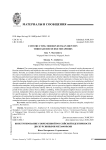
Constructing modern Russian identity through discourse metaphors
Статья научная
The current paper presents a comprehensive literature review of research into the phenomenon of Russian national identity and emphasizes the crucial role of discourse metaphor in narratives of national culture and identity. The latter, as a complex mental construct, encompasses common or similar beliefs or opinions internalized in the course of socialization as well as emotional attitudes, behavioural and linguistic dispositions. The paper claims that Russian patriotism-based national identity construction is directly related to the historical background, current political ideology, as well as objectives and tasks the state sets. Patriotic sentiments in Russia tend to boost due to some life-changing dramatic events or challenges the countryhas to face; this gives rise to employing a multitude of discursive practices, which relyheavilyon discourse metaphors. The relevant point the paper proposes lies in the fact that discourse metaphors, being conceptuallygrounded, serve as a pervasive cognitive mechanism applied to explain a complex abstract concept of national identity. However, its meaning is still being shaped in relation to a particular period of time and the context where a debate is unfolding. Unlike conceptual metaphors that are considered to be universal, independent of time, discourse metaphors change or evolve within the ongoing discourse and are intended for specific purposes. The current paper seeks to demonstrate how particular metaphors can serve as discursive mechanisms of constructing the national identity to achieve both culturally and historically specific strategic purposes. The authors claim that a combination of co-occurring metaphors in the public discourse forms a holistic extended metaphorical narrative promoting a particular view of Russianness and focus on some of them.
Бесплатно
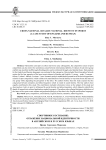
Cross-national rivalry: national identity in sports (a case study of English and Russian)
Статья научная
Nationalism and sport are often interwoven and, subsequently, the competitive nature of sport competition can also mirror the contentious nature between international athletes. Evidence of such inter-group conflict may manifest itself through ethnolinguistics and is reinforced through social identity theory. Data analysis for the English and Russian languages was evaluated in four categories. Data includes Word Association Network entries for the four opposites of the sport event schema in Russian and English: 1) strong - weak; 2) success - failure; 3) ahead - behind; 4) winner - loser. Semantic analysis established asymmetries of the lexical oppositions relative to sport competition, which reinforce the manifestation of social identity in ways that elevate the status of one group while degrading the perception of the other. The authors believe that this study exposes that the congruence between semantics and ethno-linguistics which is rooted in social identity. The four authors have equally contributed to this study. The contribution included a literature review on the subject of the study and showing how rivalry in sport is influenced by social identity and ethno-linguistics, which helped to identify the dearth of research into cultural implications underlying sports. The authors also collected dictionary definitions of the items of the sports event schema and performed analysis of the data in the English and Russian languages.
Бесплатно
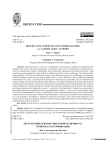
Destructive communicative personalities: a classification attempt
Статья научная
Destructiveness is viewed as a fundamental communicative category that determines the strategies and tactics of discourse interaction. Accordingly, destructive communication is understood as a type of communication aimed at deliberately and intentionally causing moral and physical harm to the interlocutor and accompanied with a feeling of satisfaction with the victim’s sufferings. The material of the study included 1120 contexts of reflection, selected from Russian literary texts, the National Corpus of the Russian Language, Internet sources and journalistic texts, as well as data from a survey of Russian-speaking respondents. As a result, a classification of destructive communicative personality types is proposed based on the communicative tactics prevailing in their behavior. The authors distinguish three types of destructive communicative personalities: destructive communicative personalities practicing predominantly invective tactics of destructive communication, for example, ham (the boor); destructive communicative personalities practicing predominantly manipulative tactics - shantazhist (the blackmailer); destructive communicative personalities practicing combined invective-and-manipulative tactics - revnivets (the jealous type). These tactics can be implemented in a direct or indirect form. In the analyzed material, there is a prevalence of the communicative personality type who practices predominantly invective tactics of destructive communication. It is also possible to distinguish a potentially destructive personality type whose initial intention is not destructive, but whose communicative behavior can be eventually qualified as destructive from the perspective of the addresser and/or an observer.
Бесплатно
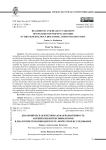
Статья научная
The article presents a corpus-based study of the diachronic and dialect variations of adverbial intensifiers used as the expression of emotionality that is a key defining feature of interpersonal conversation in the British and American film discourse. Based on the corpora of scripts of British and American feature films released in the 1930-1950s and 1990-2010s, data on the frequency of adverbial intensifiers in the sub-corpora of the English regional varieties of the two periods were obtained and their comparative analysis was carried out to establish the regional specifics and historical dynamics of their use; the collocation profiles of adverbial intensifiers that form syntagmatic units in the dialogic speech of British and American film discourse for each of the studied periods were described; semantic classes and stylistic characteristics of adjectives that form the most frequent collocations with the intensifiers were identified; the pragmalinguistic potential of the intensifiers and adjectives to indicate informality and emotionality in the dialogues of the English film discourse was determined. The diachronic analysis revealed a decline in the occurrences of the standard register intensifiers ( terribly , awfully , perfectly , extremely , etc.) with adjectives carrying the semantics of general evaluation, opinion, judgment, and emotionality in both corpora of modern English film discourse. In the 1990-2010s period, the process of renewal is observed in the UK and US film discourse when formerly frequent intensifiers are seen to be replaced by informal adverbs with a maximal degree of emotionality in speakers’ attitudes to situations, objects of the surrounding world and the interlocutor, which reflects a trend in preference towards the colloquial and substandard stylistic register. The growth of substandard vocabulary indicates that this trend is in line with the expectations of the English-speaking discursive communities that perceive film discourse as a reflection of authentic face-to-face discursive practices.
Бесплатно
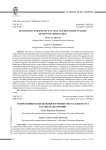
Diachronic perspective in text and discourse studies: review of approaches
Статья научная
The article is devoted to scientific observation of historically- and socially-oriented discourse studies (historical discoursology) that are presented by means of various approaches and research traditions. The authors give a review of several well-established subfields in diachronic discourse studies of language units and text types, namely historical pragmatics, historical text linguistics, diachronic discourse analysis, with the focus on the tools and methodology employed to investigate historical changes in language-in-use practice. It is stated that in Russian linguistics the diachronic aspect of language units functioning has been studied so far within the framework of diachronic stylistics with the purpose to define via the analysis of language unit realizations semantic and functional potentials of language units and text constituents, to distinguish text composition with its dependency on social and cultural circumstances of text production, to discover synchronic / diachronic perspectives in general and specific discourse categories evolution. The authors make a suggestion that the use of corpus methods in the diachronic discourse studies might considerably enhance the perspectives of finding out some prototypical features of discourse and their historical variations, if a research is based on text collections (text data) that are being analyzed with the corpus analysis protocols, strictly set historical periods and general reference to a certain textual cultures. The clearly defined corpus data could certainly help in retrieving information on cognitive, social, cultural, pragmatic aspects of the discourse type represented in the text collection of a historical period under study. The further comparison of the data in particular historical periods and / or regional references opens the ways for discovering diachronic vectors in the discourse type development through stating changes, transformations, replacements in the discursive forms and genres.
Бесплатно
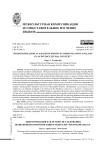
Dichotomization as a basis of positive communication analysis in an intercultural context
Статья научная
The aim of the paper is to investigate the constituent features and mechanisms of positive communication and reveal their correlation with politeness. The study is based on a mixed-method research design including Positive Discourse Analysis, dichotomic division and conversational analysis, and is carried out on the material of the book The Family by Nina Fedorova (1940). The results indicate that the dichotomy positive vs negative attitude is basic for the study and implements the contrast between good and evil, ethical and unethical behaviour. The juxtaposition of attraction vs disattraction refers to the perception of an interlocutor as likable or unlikable. The dichotomy activism vs passivism reflects the willingness or unwillingness to interact, while communication involvement vs alienation is associated with the communicator's engagement in the interlocutor's affairs. The juxtaposition of alterocentrism vs egocentrism indicates whether a communicator is focused on one's own or other people's interests. The dichotomy social support vs social indifference is a reflection of empathy or its absence. In the dichotomy constructive vs destructive communication creative behaviour aimed at resolving a difficult situation is opposed to destructive actions leading to the deterioration or break-up of a relationship. Оne of the most important constituents of positive communication is congruency which denotes authenticityand correspondence of the person's genuine inner selfwith the image addressed to the outer world. Positive communication is intrinsically linked with, though not identical to, politeness. The latter does not act as an aim per se, but is rather a tool employed to make an interaction conflict-free, smooth and harmonious.
Бесплатно
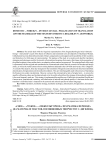
Статья научная
The article deals with the linguistic representation of the linguoculturological triad “domestic - foreign - intercultural” as part of the theory of reflective and translation turns developed by D. Bachmann-Medick. Globalization has transformed the principle of binarycategorization and mapped out the possibilityof their synthesis and formation of a third space of communication. The purpose of the study is to analyze and describe translation strategies and techniques used for the transfer of intercultural meanings that create a third space in the perception of the global recipientt, where neither basic, nor adaptive culture markers are preserved. The empirical basis of the study is represented with the original and translated texts of international artistic festivals, memoirs of Russian and foreign artists, as well as the verbal content of news online platforms dedicated to the 150th birth anniversary of S.P. Diaghilev. As a result of the analysis, three keystrategies for the translation of linguistic-and-cultural units have been identified: domestication, foreignization and intercultural mediation. Theyare interchangeablyused in the process of translating the Russian texts under consideration. However, owing to the communicative task of original texts - to convey the specifics of Russian culture and include national art in the world cultural fund, the strategy of intercultural mediation is the most frequentlyused one. This strategy is implemented through the use of Gallicisms in translated English and German texts, international vocabulary, and elimination of national and cultural specifics. It has been shown that a translator’s individual style is imposed on the systemic and cultural specifics of natural languages.
Бесплатно
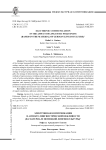
Статья научная
The article presents major ways of implementing linguistic politeness in electronic communication of the German linguocultural community. Following basic communicative principles of positive politeness, the authors analyze such e-mails speech acts as greeting, appeal, parting, congratulations, wishes, gratitude, that actualize strategies of positive politeness, or strategies of reconciliation in the virtual interaction of communicants. In German linguoculture the communicative strategies of reconciliation are the attention-and-care strategy, the strategy of using in-group identity markers, the strategy of exaggeration, the strategy of giving communicative gifts, the strategy of demonstrating intense interest; their implementation is supported with various means and methods of expressiveness, including contact appeals, adjectives, pronoun viel , modal verb mögen , performative verbs of wishes and gratitude, subjunctive mood, etc. It is stated that the communicative strategies of politeness are aimed at preserving the positive face of the addressee, that is, satisfying the needs of a person to show attention, care, interest, sympathy, love towards the addressee. It should be noted that study of the principle of politeness in email writing is viewed as a priority for German linguoculture, since communication via e-mail is one of the most popular and common ways of virtual written communication both at home and in business.
Бесплатно
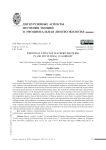
Emotional effect of teachers’ discourse in a multicultural classroom
Статья научная
The manifestation, meaning, categorization of emotions, as well as the factors that cause them, have cultural characteristics. To build successful intercultural interaction it is necessary to be aware of them. This study explores classroom discourse and emotions of international students in a multicultural classroom. Our goal is to determine what emotions the discourse of Russian teachers evokes in students from different lingua-cultures and which speech acts have an emotional perlocutionary effect. The material was obtained through a questionnaire with the participation of 70 international students (45 Chinese and 25 Algerian). We focus on emotions and emotional states of surprise, happiness, sadness and offense. Being drawn on qualitative and quantitative methods the comparative analysis showed that the behavior of Russian teachers is more likely to surprise Chinese students than Arab ones, besides Chinese students experience negative emotions and states more often than Arabs which may indicate a greater cultural distance. In relation to speech acts that evoke the emotions, we identified some similarities and differences, which are discussed through the type of culture and cultural values. The results contribute to the study of culture specific features of emotions in communication. They specify the factors that evoke emotions in students belonging to different lingua-cultures, and can contribute to the successful interaction of Russian teachers with international students in a multicultural classroom.
Бесплатно
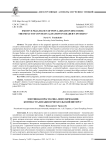
Emotive pragmatics of popularisation discourse: the impact of contextualisation on reader's interest
Статья научная
The paper adheres to the pragmatic approach to emotion processes and focuses on emotion- evocative communication. Its goal is to investigate the impact of contextualisation techniques, which employed by popularisation discourse to induce readers’ interest. The research is carried out in two ways, discourse-pragmatic and experimental. First, by adopting the sociopragmatic view of emotions and using methods of discourse analysis, the paper fleshes out a model of emotion-evocative communication, outlines contextualisation techniques, and introduces text materials. Second, by representing the experimental study, the paper assesses the interest-evoking effect of contextualisation. The experimental study involved 400 undergraduate students. We employed the scaling method (7-point bipolar scales) to measure participants’ attitude to generalised and contextualised text passages. The data analysis applied the Wilcoxon test, the Kolmogorov - Smirnov test, Spearman’s correlation coefficient, the linear regression, and the explanatory factor analysis. The comparing tests reveal that contextualisation promotes reader’s interest in the popularisation text. The findings suggest that contextualisation techniques make the text content more relevant to the reader. Personal relevance - as a kind of mediator - causes interest responses . Beyond that, it was found that that reader’s expectations about text strategies to presents knowledge construct interest- evocative communication. The findings demonstrate how communicative variables combine into the model of emotion-evocative communication.
Бесплатно
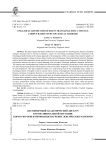
English academic discourse in translinguistic context: corpus-based study of lexical markers
Статья научная
The paper applies the Matrix method to an investigation into translinguistic features of English academic discourse that is serving worldwide a means of cross-cultural exchange between researchers with translingual skills. Based on the corpus approach to the comparison of the two corpora that comprise samples of professional academic writing in various fields of study (Art and Humanity, Natural and Social sciences), the paper seeks to identifyboth quantitativelyand qualitatively correlations in repertoire and frequencies of recurrent linguistic expressions between the native English-language and non-native (Russian) academic discourse performers. The corpora were investigated along with the use of lexical bundles, re-occurring lexical units, which were grouped into noun-based and preposition-based phrases with post-modifier fragments, verb-based phrases with any form of verb components. The data comparison points to a code-mixing trend at the syntagmatic layer, which is a translingual fusion of English words in accord with a mixture of syntagmatic relations typical of English and Russian variations of academic discourse. It was found that non-native writing does not reveal as much lexical flexibility as native writers do and to a large extent relies on formulaic expressions, most of which are not conventional for expert native academic writing. Native Russian writers use excessively noun-based phrases with abstract nouns and underuse noun phrases without prepositions. Verb phrases with that - and to- clauses are mainly characteristic of native professional writing whereas non-native writing employs patterns with active verbs and passive constructions. It was found that non-native writing lacks quantifying phrases and hedging expressions that mitigate the proposition.
Бесплатно
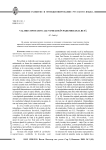
Evaluative connotations of proper names in Russian paremiology
Статья обзорная
Based on the study of Russian proverbs and sayings, thematic groups of paremias have been established, in which proper names have evaluative connotations; methods of education and types of estimated connotations of Russian anthroponyms are revealed
Бесплатно


